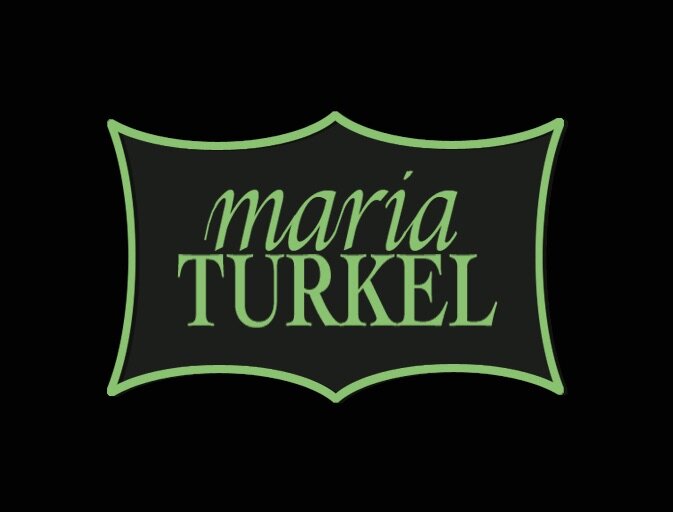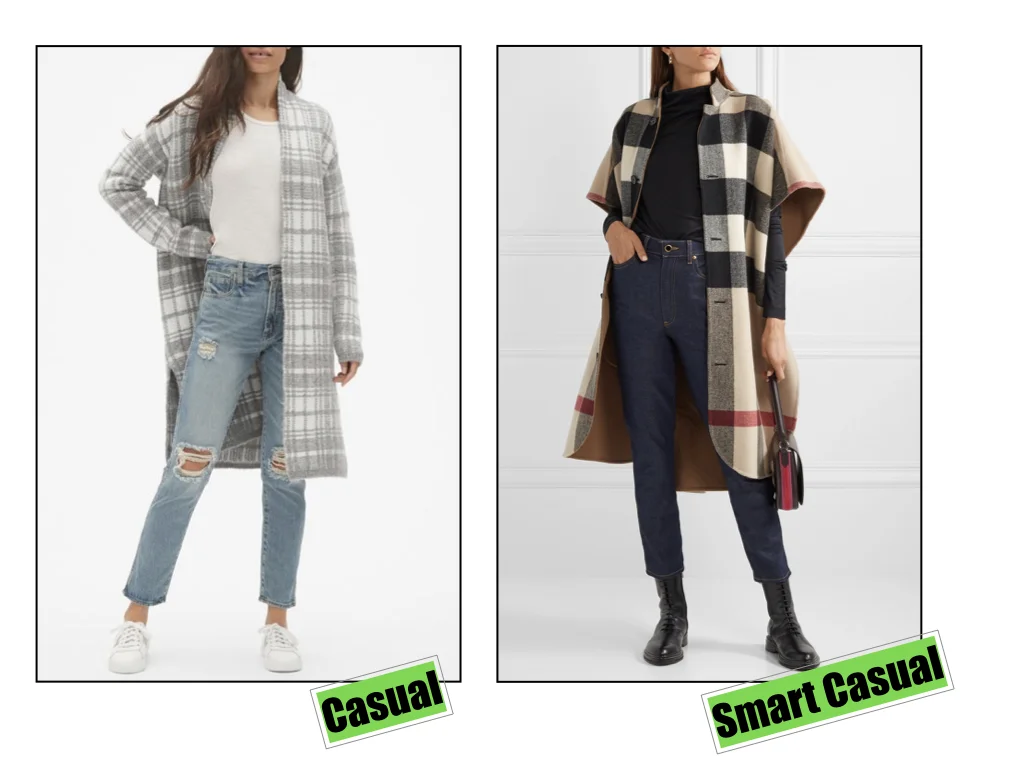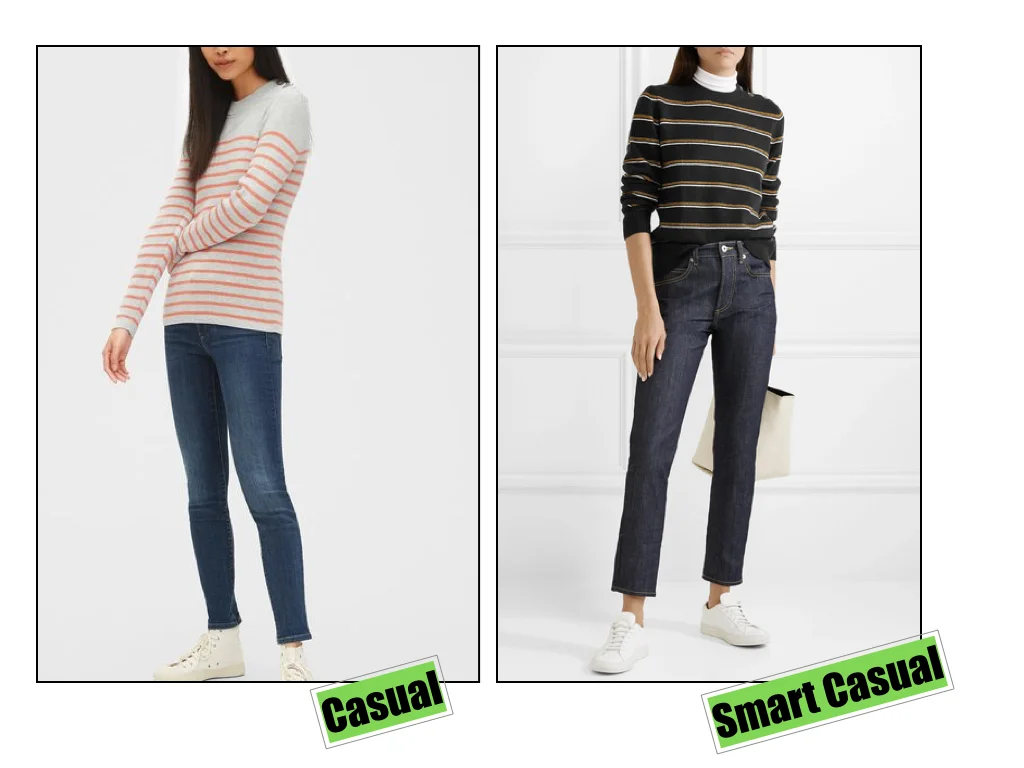Dressing ‘smart casual’ sounds great, but what does that really mean? In a nutshell, it’s elevating your everyday style by adding thoughtful and interesting elements to each outfit.. So smart casual can work whether you spend your days in an office, at volunteer meetings or running around town keeping your family moving forward. Here are some visual examples with my thoughts on the differences between each outfit and how you can pull this off no matter your personal style or budget.
LONG CARDIGAN + JEANS:
While both of the outfits above are tonal, the smart casual version uses proportion in a more interesting way. The cardigan/poncho has short sleeves so the long sleeve turtleneck peeks out from underneath giving added dimension to the look. Also notice the proportion of the jeans—high rise and cropped with a flat boot. The handbag and earring add to the overall look by pulling in color (in the bag) and some light near the face (the earring) which reflects the shine on the boot.
STRIPED PULLOVER + JEANS-N-SNEAKERS:
The smart casual version of the striped sweater and jeans outfit uses proportion and also color to elevate the basic pieces of the outfit. Notice how white is added in three places: turtleneck, handbag and sneaker. That keeps the eye moving around the outfit (which is a good thing). The proportion of the jeans is a bit more interesting as well: higher rise (plus the front tuck of the sweater) and straight and cropped. Those details make a big difference.
BLACK BLAZER + PANTS:
The tendency is to put the pattern on the piece directly under a jacket (in the casual example, the striped shirt), but notice how interesting it becomes to add pattern to the pant and then a solid color under the black jacket. Another choice that elevates this whole look: the white shoe. The expected shoe would most likely be black. And notice that the handbag color does not match the shoe color but is still light. Imagine the plaid pants in the same silhouette as the black ankle pants in the casual example; then picture the more simple black blazer (also in the casual example) with a plaid ankle pant. Those shapes read even more casual and you could still apply the same ideas shown in the sophisticated smart casual example above.



